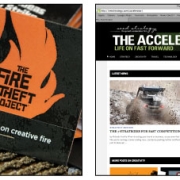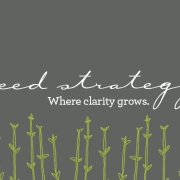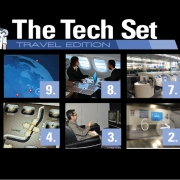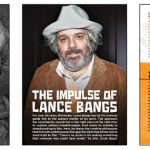5 Reasons Why You’d Rather Be Reading BuzzFeed
BuzzFeed’s lists and quizzes have been winning the hearts (and occasionally minds) of Millennial audiences since 2006. We’re here to expose a few of their best-kept secrets.
Admit it—you were about to close this window.
There comes a point in every Millennial’s life when they ask themselves, “Why am I reading this goofy top-10 list instead of doing what I’m supposed to be doing?” It’s a fair question. And it’s one that’s worth asking… especially if you’re in the marketing business.
In the past few years, BuzzFeed has become the main source of news-related entertainment for Millennials and continues to grow every year. Long story short: when it comes to successfully targeting, understanding and engaging a specific consumer segment, there is perhaps no better example than BuzzFeed.
So don’t worry—that executive summary can wait. This is a top-5 list that’s well worth your time… and may even teach you a thing or two (or, um, five) about reaching your target consumer.
1. BuzzFeed is persistent.
 “Can we do 10 variants? Can we take this video and put it in 10 different contests? One in a list, one with a quiz, one with a cut-out tool—let’s see what takes off!”
“Can we do 10 variants? Can we take this video and put it in 10 different contests? One in a list, one with a quiz, one with a cut-out tool—let’s see what takes off!”
– Jon Steinberg, President of BuzzFeed
“One and done” doesn’t cut it for BuzzFeed. Implementing the “MVP” (Minimum Viable Product) approach to product innovation—which calls for minimal, iterative changes to isolate successful variables—BuzzFeed editors will often expose several versions of each article, each with a different creative approach… a list, a quiz, etc. With every iteration, they adjust, adapt and evolve… perfecting their process, gaining deeper consumer insights and mastering their creative delivery.
Catch the Buzz: Learn what wins, what doesn’t and keep adjusting. Iteration is the key. Be persistent, be patient. Learning your consumer, and the voice that best reaches them, is often a process of trial and error.
2. BuzzFeed is emotional.

“People want to engage with content, not just consume it. The more engaging, the more it gets shared.”
– Jon Steinberg, President of BuzzFeed
More than anything, it’s emotion that makes everything BuzzFeed does so lovable—and, perhaps more importantly, shareable. After all, we’re more likely to share something that’s near and dear to the heart… and shared content is more likely to go viral and make deeper inroads into the target demographic. BuzzFeed categorizes material based on one of several emotional indexes: LOL, cute, OMG, entertainment, community and more. It’s all about making content personal and connecting at a deeper level.
Catch the Buzz: What emotions do your products evoke? Throughout the process of iteration and creation, look for cues on how your target responds, and tailor your approach to find that emotional sweet spot.
3. BuzzFeed is creative.
 “I think of this as part art and part science. I think you use your gut and creativity to make lots of content that you think will work and then use the data to try and get closer to your audience by focusing on what they respond to.”
“I think of this as part art and part science. I think you use your gut and creativity to make lots of content that you think will work and then use the data to try and get closer to your audience by focusing on what they respond to.”
– Ze Frank, Executive Vice President of Video at BuzzFeed
BuzzFeed thinks of its “product” as both analytical and creative. Gut sense, honed through years of experience, coupled with keen instincts allow BuzzFeed’s editors to create a broad spectrum of content that they think will work. A wealth of data then allows them to pinpoint their target audience and fine-tune the process to ensure success.
Catch the Buzz: Sure, data is important—but it’s how you use it that really counts. It takes creativity and often good old-fashioned intuition to make the most of facts and figures. Be creative, try new things, listen to your instincts.
4. BuzzFeed is original.

“We need to build on our past successes but also continue to make changes in how we operate as we move ahead. We are capable of doing so much more than just a year ago and we need to update our thinking, ambition and temperament to match our new abilities.”
– Jonah Peretti, Founder and CEO of BuzzFeed
BuzzFeed was curating existing news/entertainment media for a long time before it started creating its own content. Using the data mined in those early years, the company’s content managers ran a fancy algorithm to aggregate media that showed potential for going viral… so they had a pretty solid idea of what was going to resonate with their readers. And when they changed their business model to start generating content, Millennials were all over it.
Moving forward, BuzzFeed continued to diversify its offerings by offering “serious” news—financial info, international affairs, etc. And, because Millennials were already accustomed to the feel and format, it was a move that worked—lots of young people now get more of their “real” news from BuzzFeed instead of CNN or Fox.
Catch the Buzz: Once you know what your target wants—and expects—give them something new. Something unique. Pique their interest, raise their curiosity. Even if that means going up against more established competitors.
5. BuzzFeed is first.
 “We find things on Sunday morning that will be on the Today show on Tuesday morning.”
“We find things on Sunday morning that will be on the Today show on Tuesday morning.”
– Jon Steinberg, President of BuzzFeed
With everything it does, BuzzFeed’s agile, responsive approach to business helps it maintain consumer relevancy. From rapid-fire iterations to pre-emptive content-creation strategies, the idea gurus at BuzzFeed are always one step ahead of the curve, and one step closer to the next big opportunity… even if they’re not entirely sure what that opportunity might be. This allows them to be ready, be first and be the best at what they do. And that is: giving their audience fun, quirky-yet-informative content they just can’t get enough of.
Catch the Buzz: Take it from BuzzFeed—speed counts. Do it fast. Do it first. Do it often. Learn. Repeat.
Taylor Exline is an Associate Project Director at Seed Strategy where she utilizes her insatiable curiosity to create winning brand strategy and innovation.
As a member of Seed’s copywriting team, Matt Donahue marries his love for creative writing with a keen interest in product innovation, technology and science. He’s a graduate of Seton Hill University’s “Popular Fiction” master’s program and writes whenever he can.
P.S. You can follow Seed Strategy on our LinkedIn, Twitter, Facebook and Instagram pages.












Trackbacks & Pingbacks
[…] 9.) http://seedstrategy.com/accelerator/5-reasons-why-youd-rather-be-reading-buzzfeed/ […]
Comments are closed.